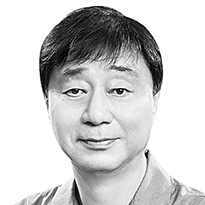Three keys to promoting our traditional music

Ha Eung-bag
The author is an intangiblecultural properties advisor at the Cultural Heritage Administration.
The Korean Traditional Music Promotion Act was finally promulgated on July 25. Article 9 of the Constitution stipulates, “The State shall strive for the succession and development of traditional culture and the creation of national culture.” But due to the lack of specific laws on comprehensive and systematical support for traditional music — one of the main axes of traditional culture — government support for the traditional music, or gugak, was insufficient.
The music promotion act, which consists of 17 articles, contains four meaningful clauses. The minister of culture, sports and tourism shall formulate and implement a basic plan to promote gugak every five years (Article 5) and the minister shall research creating and enjoying new traditional music to help establish and implement policies for the promotion of gugak. (Article 6). The State or local governments shall support projects that foster professionals promoting gugak or in the gugak industry (Article 11), and designate supporting organizations to efficiently carry out projects and activities to promote and nurture gugak as well as the gugak-related cultural industry (Article 15).
Three conditions are necessary for the barely legislated act to function properly. First, the Ministry of Culture, Sports and Tourism must establish a command center that can effectively administer such functions. Currently, a small division under the Arts Policy Officer in the Office of Culture and Arts Policy — not a department or bureau — is dealing with all gugak policies.
The problem is that the division oversees not only gugak but also broader music, dance and theater. The division only has two officials — an administrative officer and a curator — dealing with gugak. This does not make sense. The two public officials have to manage and supervise all gugak-related institutions and administer various gugak competitions. In addition, they also must deal with affairs related to the National Gugak Center, the Gugak National Middle and High Schools, the National Middle and High School of Traditional Korean Arts, the Gugak TV, and the annual Korean Folk Art Festival.
Unless they have superpowers, two officers cannot handle all this work. Consequently, the government official in charge of gugak in the ministry realistically did not have time to listen to the voices from the industry. Gugak musicians inevitably complain about what the country is doing for traditional music.
This is one of the reasons why gugak musicians desperately want the Traditional Music Promotion Act. With the law’s implementation, the number of government officials in charge of gugak should be increased, and a separate division, if not a department, exclusively in charge of gugak, must be established. Only then can a proper gugak policy be devised and industry voices heard.
Second, to effectively implement the law, it is necessary to canvass a broad public opinion from gugak musicians. Gugak has a wide spectrum, from vocal music such as pansori to dance such as Taepyeongmu, instruments such as gayageum and daegeum, traditional dance, and farmers’ music. Each of them is our precious tradition, and each genre, generation and region has different viewpoints. The enforcement ordinance and regulations of the act must integrate any possible dichotomy and bring them together. An advisory group or a democratic process of public hearing are needed to minimize potential complaints.
Third, it should be for the benefit of the general public, not the interest of a specific organization or group. When any law is passed, a competition to benefit from it begins. After the National Assembly passed the traditional music promotion act, the Ministry of Culture, Sports and Tourism stated in a press release that it will “carry out promotion policies focusing on three directions: preservation and succession, creative support, and overseas expansion.” Preservation and succession are the purview of the National Gugak Center, while the Korean Traditional Performing Arts Foundation will lead support for creative works and the Korea Arts Management Service will drive overseas expansion of gugak. If so, nothing changes from the current gugak policy.
The ministry must start from scratch and draw up various plans by gathering creative ideas from outside. It must first clearly understand the purpose of the legislation. I hope that gugak will be widely popularized with the enactment and enforcement of the act. I sincerely hope that gugak will be loved by more people and reborn as our great traditional culture.
Translation by the Korea JoongAng Daily staff.










with the Korea JoongAng Daily
To write comments, please log in to one of the accounts.
Standards Board Policy (0/250자)